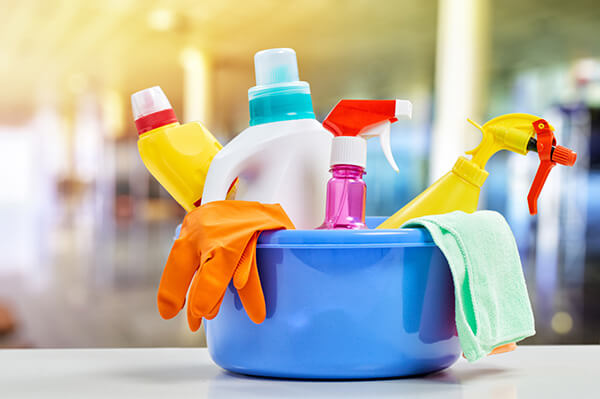
Follow these guidelines for keeping your team healthy, your store hygienic and your customers comfortable shopping for sleep products during the COVID-19 outbreak
The novel coronavirus is causing illness and death, wreaking havoc with the economy — and challenging us all to come up with new songs to sing to ourselves as we wash our hands for 20 seconds umpteen times a day.
Many bedding retailers already were struggling before the arrival of COVID-19. We need more reasons for shoppers to visit mattress stores, not fewer.
In some states, retailers already have temporarily closed their doors because of the pandemic, either by order of governors or as part of their own “flatten the curve” effort. If you remain open, there are steps you can take to make consumers feel safer and more comfortable when shopping for new sleep products. These tips also apply to corporate headquarters, training centers, warehouses and other facilities you may operate.
And, if you’re temporarily closed, we encourage you to put these practices into place when you reopen, as we expect everyone to be more focused on good sanitary practices going forward.
These suggestions come from the U.S. Centers for Disease Control and Prevention and businesses that have announced new ways of operating.
Employee hygiene
- Sleep Savvy always has encouraged retail sales associates to shake customers’ hands. No more. You can come up with an alternative greeting: Some businesses are encouraging small bow, a hand over the heart or other no-contact gestures. A hearty smile and “hello” works well, too.
- Keep your distance. Health experts advise keeping at least six feet between people. It’s OK to explain to shoppers why you’re standing at a bit of a distance.
- Employees already should be washing their hands every time they use the bathroom and now some businesses are instituting handwashing schedules, requiring all employees to wash their hands every hour. The CDC encourages people, in general, to wash their hands “at the door,” meaning as they leave and return home. You might require a similar policy of handwashing for employees as they arrive at work and go home for the day. Scheduled text messages or emails can help remind employees to stop what they are doing and wash up throughout their shift.
- When employees have to cough or sneeze encourage them to do it into the crook of their elbow or into a tissue (washing their hands immediately afterward).
- Require employees to stay home if they feel ill or exhibit symptoms (fever, cough, shortness of breath).
- Allow as many employees to work at home as possible. Zoom, Skype and other technologies make holding staff meetings easy. As a last resort, get everyone on a good ol’ conference call. For in-person meetings, use well-ventilated spaces large enough that employees can keep distance between themselves.
Store hygiene
- Place hand sanitizer at the entrance, sales desk and other high-traffic areas of the store. Do the same with boxes of tissues. Empty all trash receptacles more often.
- Sanitize mattresses, foot protectors, pillows and bolsters with disinfectant spray after every rest-test.
- Clean adjustable base remotes with disinfecting wipes after every demonstration.
- Use disposable pillow protectors. Don’t let anyone rest-test a bed without putting a disposable pillow protector between them and the pillow, bolster or mattress surface where their head will be.
- Look for ways to reduce the number of times employees and customers need to touch store fixtures and door handles. A Sleep Savvy editor recently visited a restaurant bathroom where the owners had installed a new “sanitary handle” — a plastic bar above the door handle. After using the bathroom, customers can hook their forearms into the plastic bar instead of grasping the potentially germy door handle.
- Increase the frequency of store cleanings, paying particular attention to door handles, the sales desk, computers and other surfaces that are touched often. Target has announced that it will clean checkout lanes and touchscreens every 30 minutes.
- Increase building ventilation by turning up air conditioning or propping doors open.
- Stop selling floor models or returned beds in discount centers. It is unclear at this point how long coronavirus can live on fabrics.
- Reduce store hours to allow for thorough store cleanings each day.
Delivery hygiene
- Outfit delivery trucks with hand sanitizer and disinfecting wipes, and require delivery teams to sanitize their hands before entering and after leaving every customer’s home.
- Ask customers to confirm that everyone in the household is (to the best of their knowledge) healthy before delivering and setting up a new bed set.
- Require delivery teams to use disposable gloves when dealing with used bedding. All used bedding should be bagged before being removed from the home and put into trucks.
Focus on e-commerce
Whether your brick-and-mortar locations remain open or are temporarily close, encourage customers to shop online. If you’ve got downtime because your stores are shuttered, this is an excellent time to augment your website for improved e-commerce and to promote boxed beds for pickup or delivery.
Announce the steps you’re taking
Email your customer list, post in-store and promote on social media the protocols you’re following to keep your store clean, your products hygienic, and your staff and customers healthy. Customers will appreciate your efforts and feel more comfortable shopping.
Sources for up-to-date information
The federal government has created Coronavirus.gov to provide updates on the spread of the COVID-19 disease, and to offer mitigation strategies and related information. Your state and local health departments can offer more specific guidance and information for your area. Bookmark the websites and also follow the social media feeds of these entities for the most up-to

